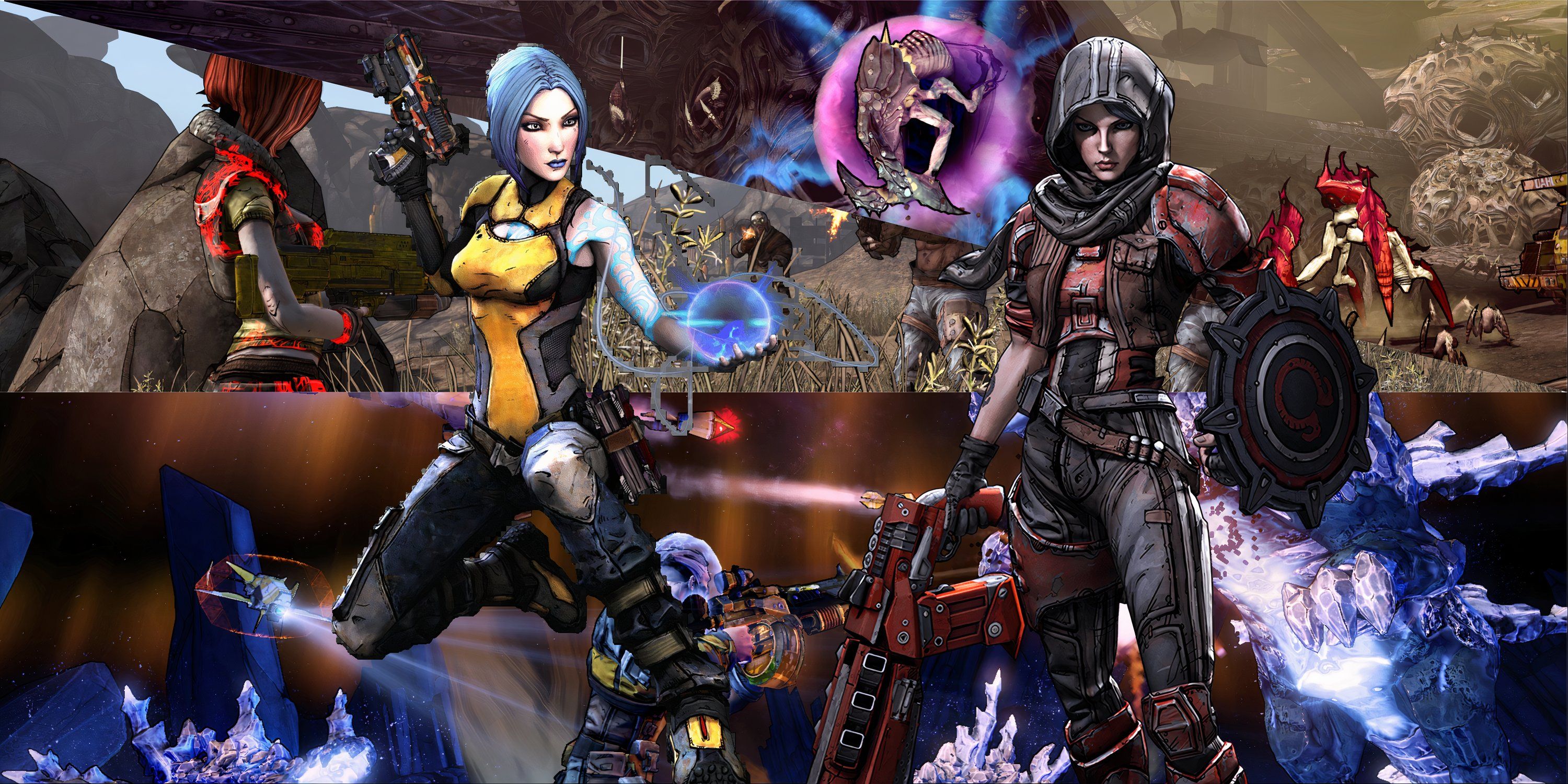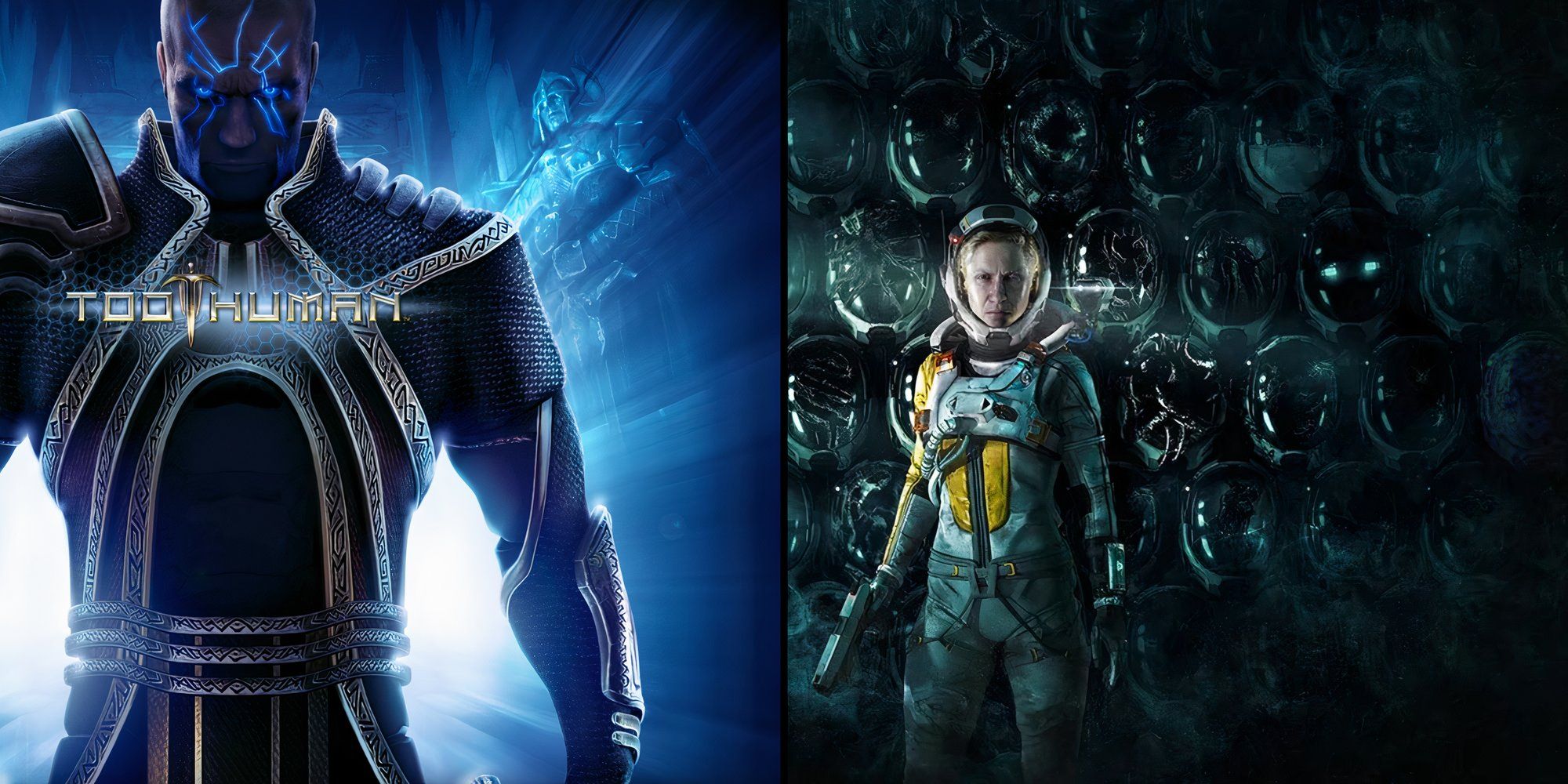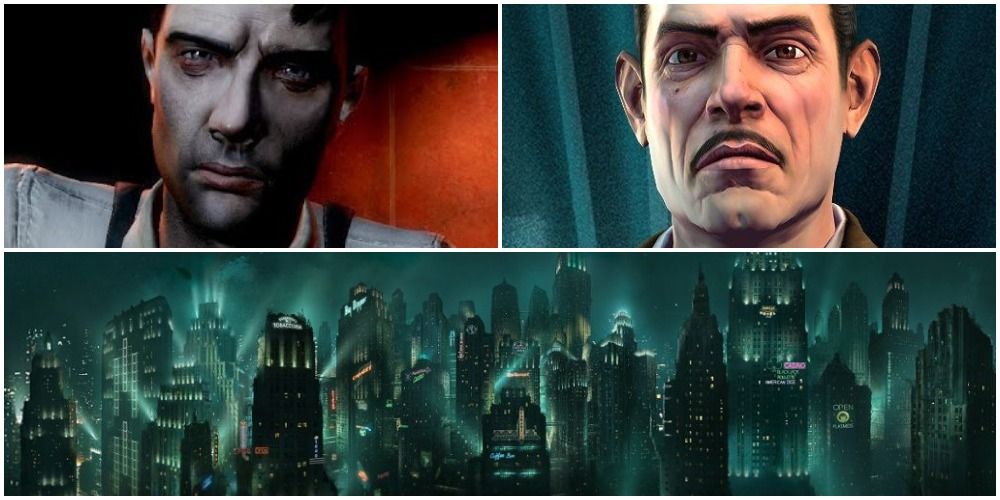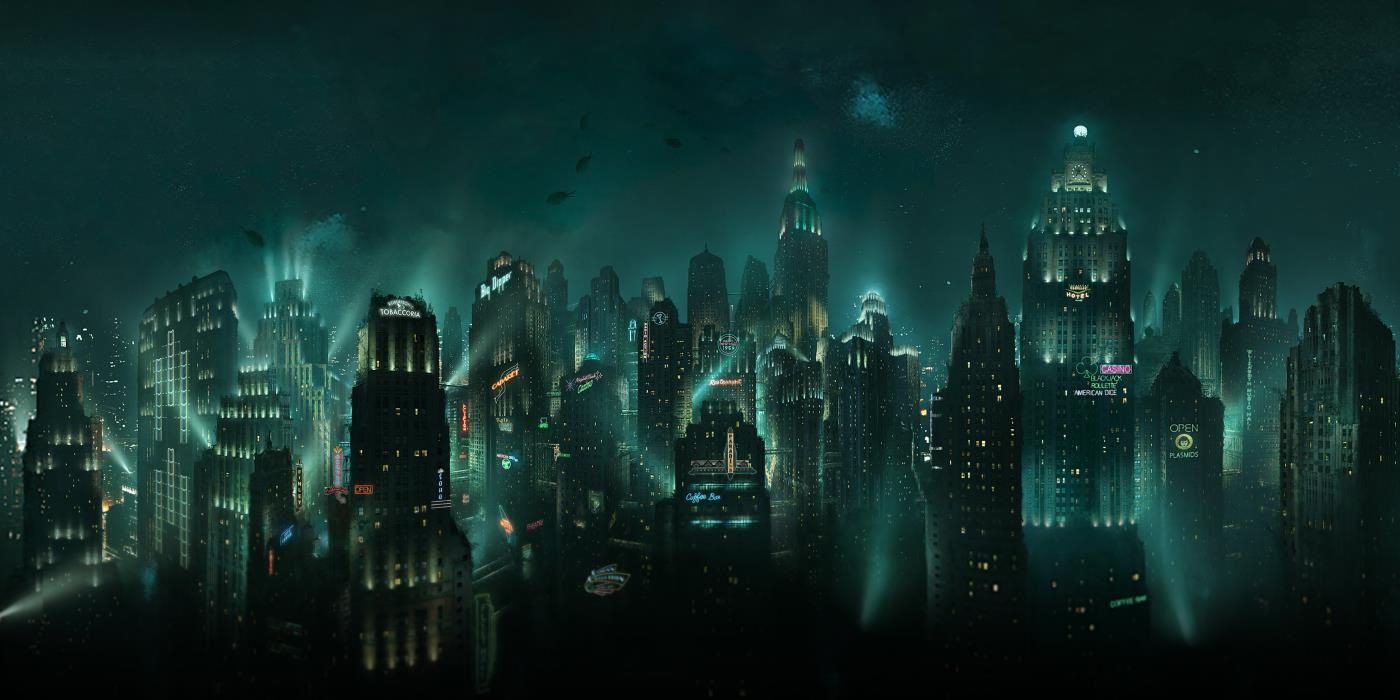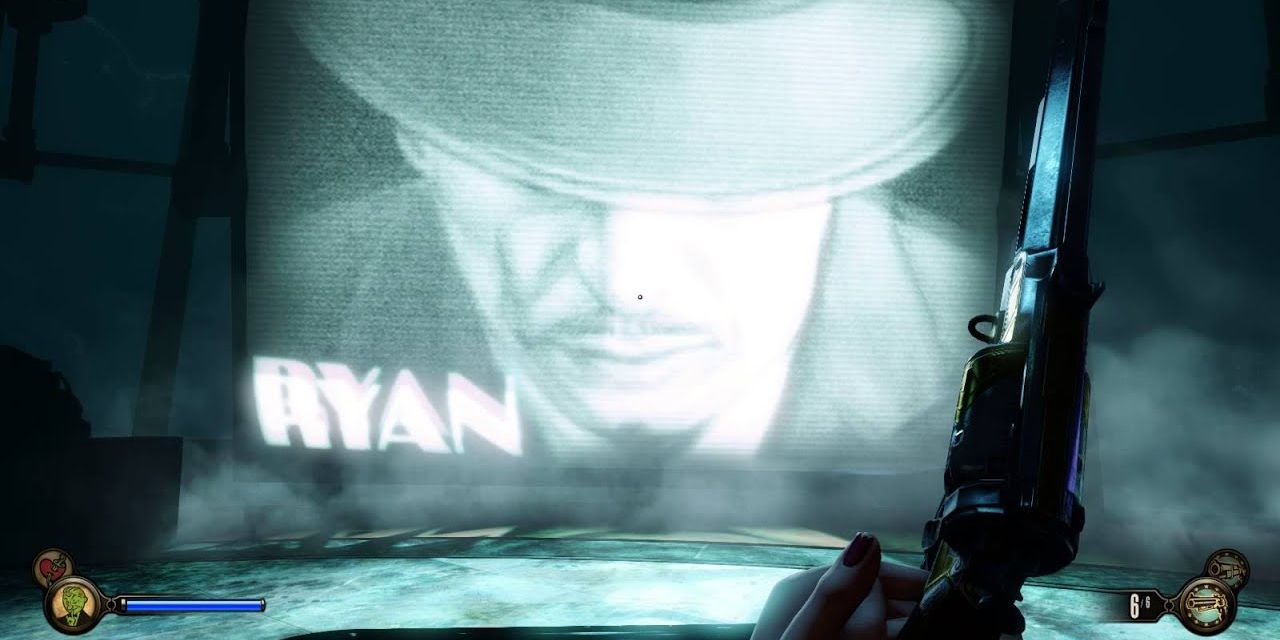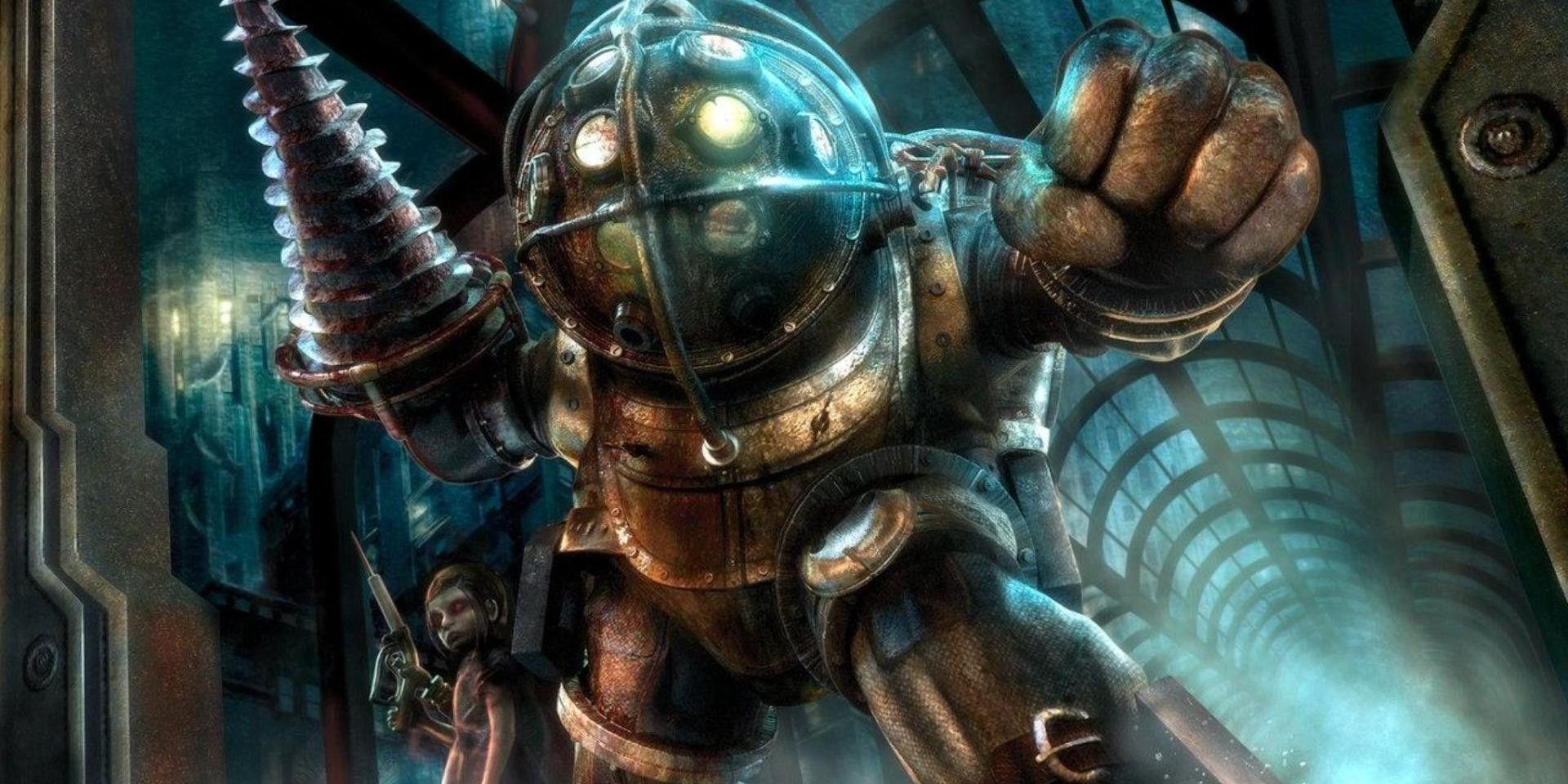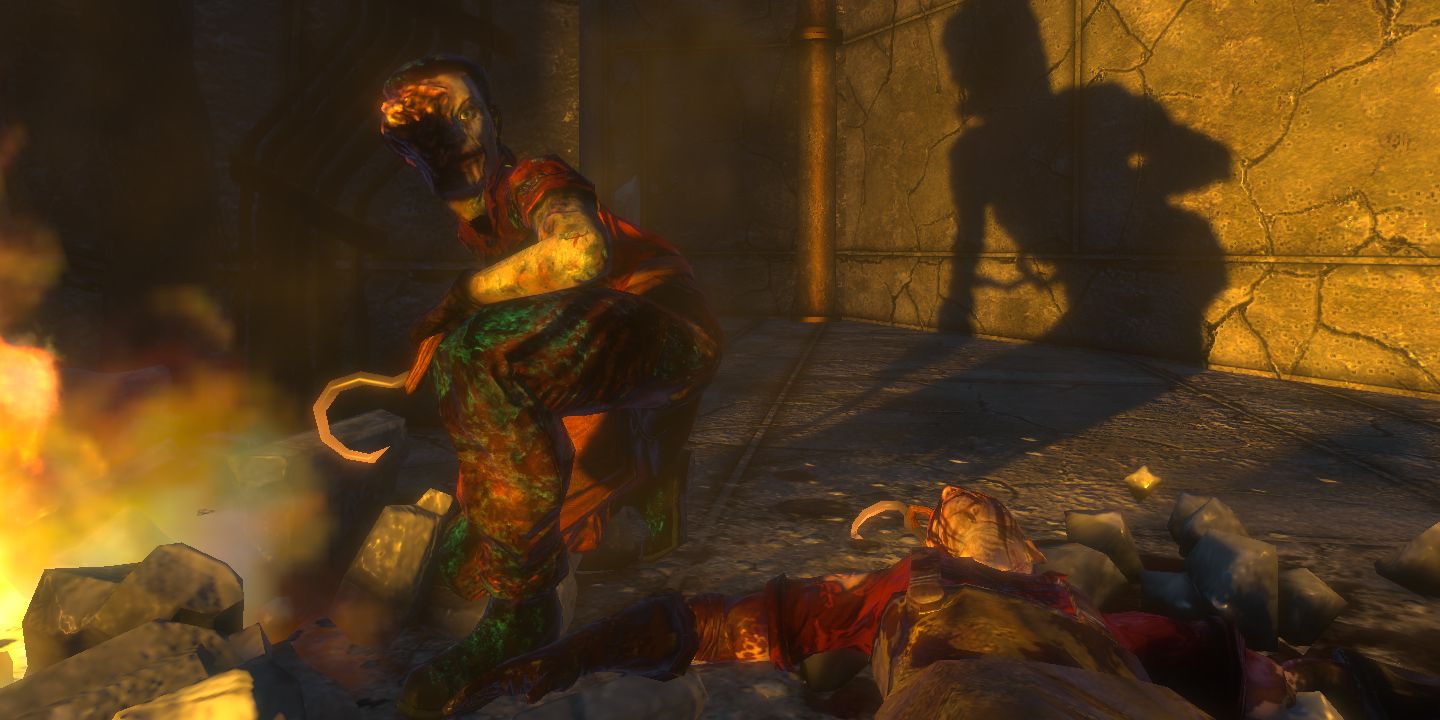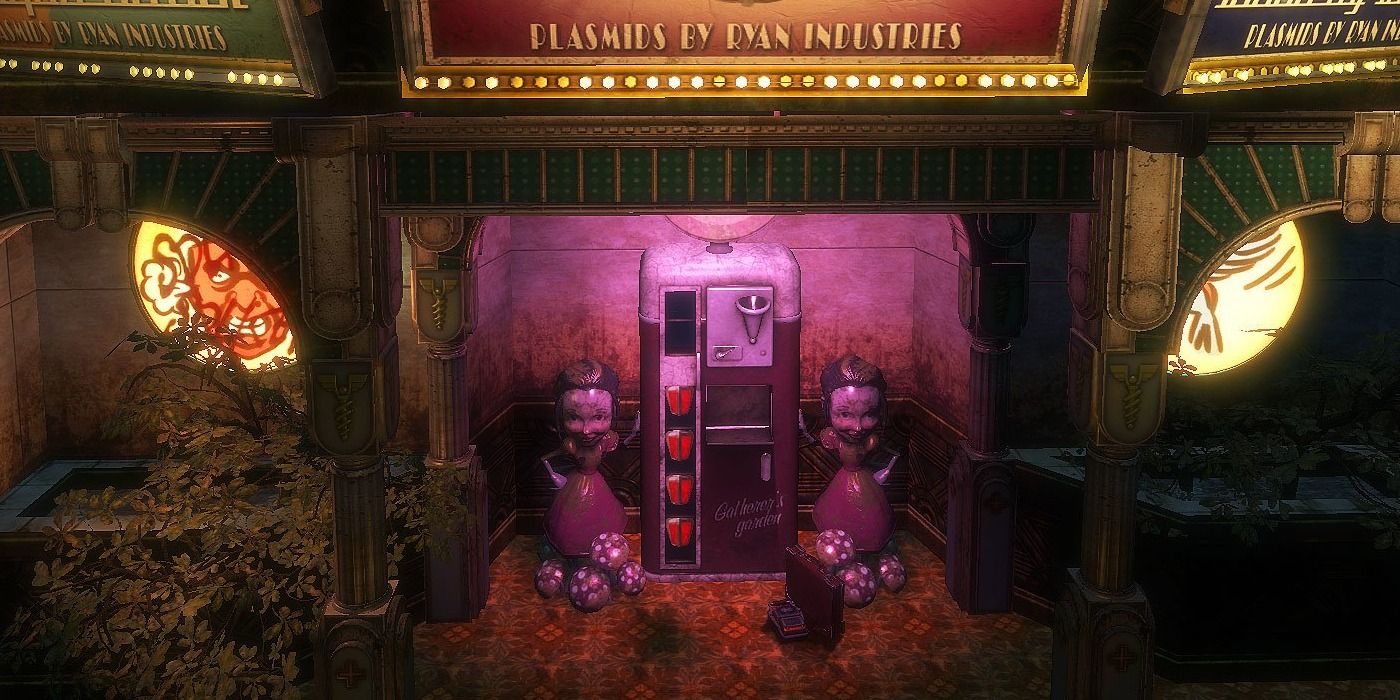Despite a fairly simplistic and minimalist narrative, Bioshock introduced players to the surprisingly detailed world of Rapture — an underwater city and failed utopia. While Jack's excursion is succinct, his journey through the ruins of the city uncovers a web of interconnected stories and characters. These all come together to show what went wrong in what was meant to be the perfect world as envisioned by philosopher Ayn Rand. Bioshock 2 and Bioshock Infinite: Burial at Sea would go on to further expand on Rapture's history and culture, and just how many problems came with a hyper-capitalist social climate.
While Rapture had problems from the start, the key event that finally led to its downfall was a bloody civil war. The games themselves haven't shown the full conflict, but players feel its impact in crumbling ruins. Gamers also watch Elizabeth set part of the war into motion during Burial at Sea - Episode 2. Over the course of the war, Rapture was torn apart in a pointless corporate war while its citizens were forced to pick sides with no winning options. Here are the main things fans should know in order to understand what happened during Rapture's Civil War.
5 Background
Rapture was founded on the objectivist beliefs of Andrew Ryan, who had developed an Ayn Rand-esque philosophy. This belief held that the world was carried by great men, who were constantly pulled down by what he labeled "parasites". In theory, Rapture was to be a city belonging only to what the greatest humanity had to offer, while casting out the parasites. Ryan based Rapture's social climate on the American dream: being able to climb the ranks through hard work. However, in practice, his ideas had flaws. His efforts to build a city for the elite failed to consider the essential functions of menial labor. As Atlas puts it, "someone has to scrub the toilets."
Ryan's insistence on a free market and his opposition to capitalist regulations also led to Rapture becoming a popular destination for con artists. He tried to cut Rapture off from the surface, but this only allowed smuggling to gain a significant foothold in the city. Enter Frank Fontaine, a crafty con artist who found his way to Rapture and exploited its free market to gain power. Seeing Fontaine as a threat to his ownership of Rapture, Ryan began doing everything in his power to stop him.
4 The War's Major Players
The two key figures in the war were Andrew Ryan and con artist Frank Fontaine, the latter of whom planned to seize control of the city from Ryan. However, Fontaine eventually staged his own death to let Ryan think he had won.
The war was initially fought between Ryan's security and Fontaine's growing syndicate. The latter also exploited Ryan's neglect of the working class to get them on his side. He disguised several of his criminal businesses as charities, partially to win over impoverished citizens but also to irritate Ryan, who saw charity as a violation of his philosophy. This changed with Fontaine's apparent death. His followers were imprisoned in a building that was separated from the city and sunk deeper into the ocean.
In actuality, Fontaine still lived. Not willing to give up his ambition, he adopted the identity of "Atlas" – a character designed to be relatable to the working class. Playing the role of a revolutionary allowed him to rally together Rapture's citizens under false promises for equality. This angered Ryan, who saw Atlas as a parasite. The result was a series of bloody riots.
3 The War Established the Little Sister/Big Daddy Dynamic
Frank Fontaine had already been marketing ADAM when the war started. However, it was hard to get, let alone distribute in high enough quantities to meet demand. As tensions escalated with Fontaine, Ryan also began to see the value of ADAM.
Ryan eventually discovered that Fontaine was using his "orphanages" to turn children into ADAM hosts. He decided to exploit his enemy's work to give himself an edge in Rapture's plasmid market. He had difficulty getting enough sea slugs to maintain the ADAM supply, but found an alternative solution with help from Dr. Suchong. They could use the mutated children to collect ADAM from corpses, which Ryan could then re-sell.
This led to the creation of the Little Sisters, many of whom were kidnapped from their families and brainwashed into becoming ADAM factories. However, they tended to draw unwanted attention from splicers. This inspired Dr. Suchong to rework the Big Daddy, previously built for construction, into the role of a protector.
2 Responsible for the Massive Population of Splicers
Ryan's hostile takeover of Fontaine's old businesses caused a lot of tension in Rapture. Seeing a business opportunity and anticipating that things were going to get worse, Ryan began marketing plasmids to the general public. When Fontaine re-emerged as Atlas, Ryan began a massive campaign to promote plasmids as a means of self-defense. This in turn led to the production of counter-plasmids, with increasing levels of violence.
As they became more widespread, the effects of plasmids became increasingly clear. People began to experience neural deterioration as they became more addicted to ADAM. Rather than try to find a cure, Ryan opted to use pheromones to control his new army of splicers and make them fight Atlas. By the time Jack arrives in the original Bioshock, most of Rapture's population has been reduced to splicers.
1 How It Could Have Been Prevented
Ironically enough, Fontaine didn't actually object to Ryan's philosophy. If anything, he embraced it. What Ryan did not expect was someone beating him at his own game. Fontaine rose to power by exploiting the free market structure of Rapture, while Andrew Ryan stood by. Several people tried to warn Ryan of Fontaine's plans, while Ryan ignored them because Fontaine was technically playing by Ryan's rules.
Ryan argued several times that trying to shut down another man's business, even one that posed a threat, would violate the mentality on which he had founded the city. He dismissed, remarking that people who objected to Fontaine should "offer a better product". The lack of regulations made it easy for Fontaine to cut corners to get ahead, and to get rid of competition through coercion or outright murder.
Ryan only took action when Fontaine posed a direct threat to him personally. By that point, Fontaine had gained too much power. Had he listened to earlier warnings, Ryan could have stopped Fontaine sooner and prevented the war altogether.

